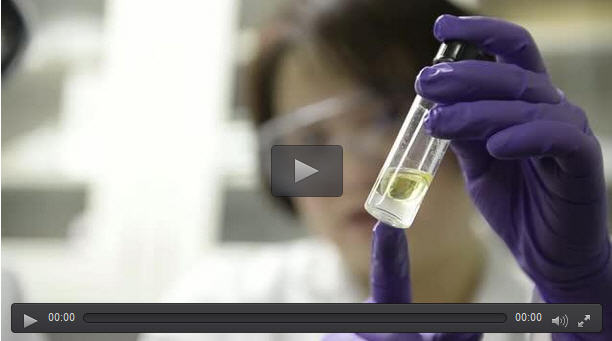Shaking the nanomaterials out

Nano implies small -- and that's great for use in medical devices, beauty products and smartphones -- but it's also a problem. All these tiny particles get into our water and are difficult to remove. Now, researchers Yoke Khin Yap and Dongyang Zhang have a novel and very simple way to take the nanomaterials out. Credit: Michigan Tech, Sarah Bird
Purifying water and greening nanotechnology could be as simple as shaking a vial of water and oil. At least that's the case for a new method to clean contaminated water full of unwanted nanomaterials.
Nano implies small–and that's great for use in medical devices, beauty products and smartphones–but it's also a problem.
The tiny nanoparticles, nanowires, nanotubes and other nanomaterials that make up our technology eventually find their way into water.
The Environmental Protection Agency says more 1,300 commercial products use some kind of nanomaterial. And we just don't know the full impact on health and the environment.
“These materials are very, very tiny and that means if you try to remove them and clean them out of contaminated water, that it's quite difficult,” says Dongyan Zhang, a research scientist at Michigan Technological University. She adds that techniques like filter paper or meshes often don't work.
Instead, shaking up oil and water traps the nanomaterials, which can be easily removed. The process clears out nearly 100 percent of nanowires, nanosheets, nanotubes and other one- and two-dimensional nanomaterials. Only zero-dimensional nanospheres are still too small to grab.
The study came out recently in the American Chemical Society's journal Applied Materials and Interfaces.
Media Contact
All latest news from the category: Life Sciences and Chemistry
Articles and reports from the Life Sciences and chemistry area deal with applied and basic research into modern biology, chemistry and human medicine.
Valuable information can be found on a range of life sciences fields including bacteriology, biochemistry, bionics, bioinformatics, biophysics, biotechnology, genetics, geobotany, human biology, marine biology, microbiology, molecular biology, cellular biology, zoology, bioinorganic chemistry, microchemistry and environmental chemistry.
Newest articles

Superradiant atoms could push the boundaries of how precisely time can be measured
Superradiant atoms can help us measure time more precisely than ever. In a new study, researchers from the University of Copenhagen present a new method for measuring the time interval,…

Ion thermoelectric conversion devices for near room temperature
The electrode sheet of the thermoelectric device consists of ionic hydrogel, which is sandwiched between the electrodes to form, and the Prussian blue on the electrode undergoes a redox reaction…

Zap Energy achieves 37-million-degree temperatures in a compact device
New publication reports record electron temperatures for a small-scale, sheared-flow-stabilized Z-pinch fusion device. In the nine decades since humans first produced fusion reactions, only a few fusion technologies have demonstrated…





















